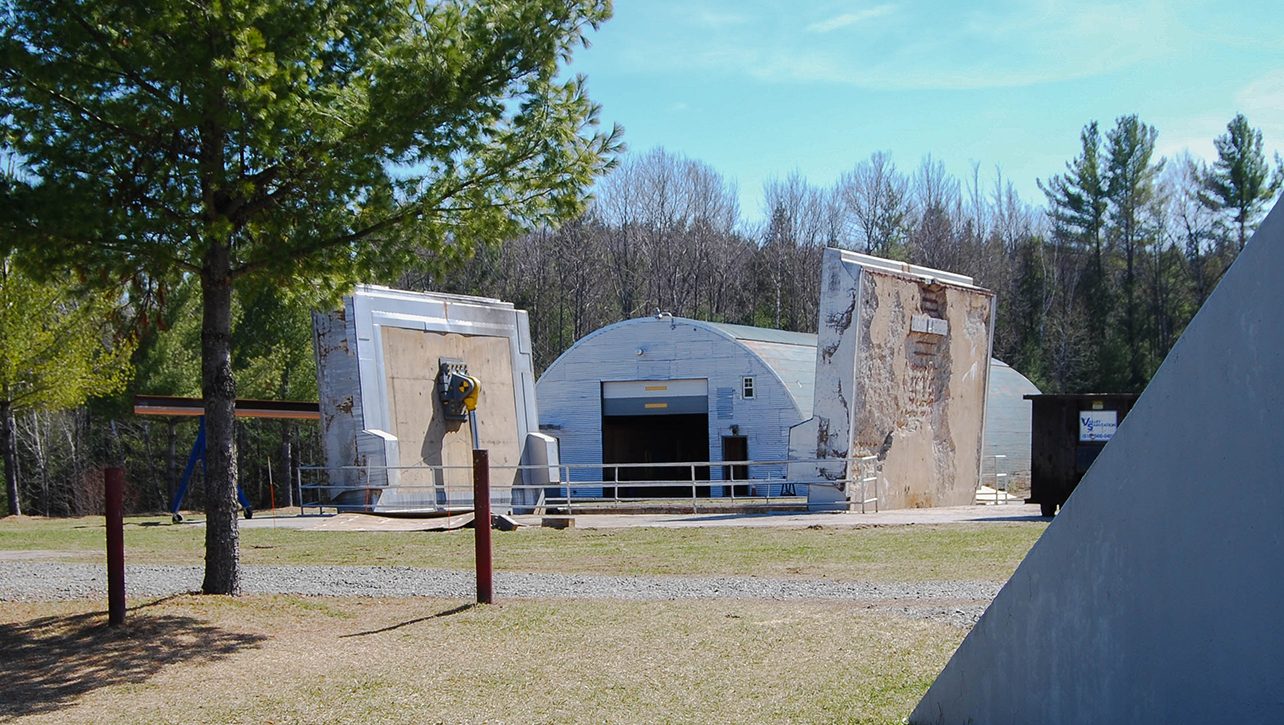

But the launch control center that we’re currently working on is a three-story building.
#MISSILE SILO FOR SALE ZILLOW KANSAS FULL#
I don’t have access to the full silo because it’s still flooded and filled with debris. Then there are how many floors below that? The first door-which is known as Door 6-leads into the blast lock, which always kept the crew behind at least one door in the event of an explosion-either from an external or internal source. Once you get four levels down, that’s where you meet the first of four 6,000-pound blast doors. Those stairs and the top few feet of concrete were all destroyed by the Air Force, so we had to build it back. Then you take four flights of stairs down to the main level, which is 35 feet below the surface. The Titan II has a secure hatch to get underground. The launch control center is between 20 to 60 feet underground.

Each floor of the launch control center is 36 feet across, and the walls are as thick as 4 feet. There are around 5,000 square feet of usable space underground. What’s the property like?Ībove ground, there are 5 acres and it’s wooded on two sides with undeveloped land. I figure it’s a 10-year build to be fully done. And there’s a million other projects after that. Once that’s done, it gets it to a blank canvas that we can start building onto. We no longer have any water, but we’re a few months away from being mud-free. So my site is particularly dirty right now. So all the dirt and mud that they poured down the hole ended up down in my facility. I also have more mud in my site than most because the Air Force was supposed to weld the door shut at the main entrance. That caused my whole launch control center to lean to one side, which was a little odd. In my case, that the Air Force had let in there before burying these sites had cut out a spring. Each one of these silo sites has its own unique challenges.

Yeah, my neighbor’s YouTube channel laid out a road map for what I was getting myself into. Did you have an idea of what you were in for? I’m cleaning it out to make it a usable space again, which will take the value up considerably. When I bought it, it was flooded with water. Those sites were similar to mine in that they hadn’t been fully renovated yet. The comps on it right now, the Arizona sites are all going for over $500,000 and one recently went for $1.5 million. So I approached him and ended up purchasing the property in June 2019. It wasn’t officially listed, but the owner was in a position where he was willing to sell. GT was friends with the then-owner of my site. I ran into GT Hill, who is now my silo neighbor, who has a YouTube channel. Now, with where I’m at in my life, I can pursue larger projects like this. As a teenager, I fell in love with the idea of an underground home or bunker. I toured the Titan Missile Museum in Arizona in the winter of 2000. Here’s our interview, which has been edited for length and clarity: What first interested you in the silos? In fact, he even gave us a video tour of the current state of his underground work. Stroiney, an airline pilot for a regional carrier, talked to us about the progress and what it’s like to own a Cold War–era missile silo. It isn’t glamorous work, but Stroiney is in it for the long haul-and for days like the one seen in the video below, when he was able to open up the silo’s escape hatch for the first time. One man’s missionīut we’ve never spoken with an owner in the middle of an underground fixer-upper project-until now. In fact, we’ve come across a few of these silo sites on the market. Some are in private hands, and some are owned by local governments. Many of the properties, which often include acres of land, were eventually sold. When the program was scrapped, the missiles were removed and parts of the silos were demolished and buried. The top-secret Titan was “the largest land-based missile ever deployed by the U.S.,” according to the Titan Missile Museum website.Įach site contained a missile silo, a launch control facility, and an access portal, and all were staffed 24/7 by Air Force personnel.

A total of 54 missiles were set up in groups of 18 around three Air Force bases in Arizona, Kansas, and Arkansas. from 1960s until the missile program was decommissioned in the 1980s. For those not up on Cold War history, subterranean Titan II missile sites were excavated in the U.S.


 0 kommentar(er)
0 kommentar(er)
